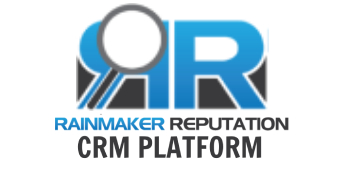Maximizing Workforce Productivity with Cutting-Edge Generative AI Solutions
Generative Artificial Intelligence (GenAI) represents a remarkable technological evolution, acting as a catalyst that redefines the operational frameworks of businesses across various sectors. By harnessing this advanced technology, organizations unlock unparalleled opportunities to significantly enhance workforce productivity. Unlike conventional automation approaches that primarily focus on replacing repetitive tasks, GenAI is ingeniously crafted to augment and complement human capabilities. Through seamless integration with sophisticated AI systems, employees are empowered to reach unprecedented levels of efficiency and creativity—achievements that were previously deemed unattainable. This synergistic collaboration not only uplifts individual team members but also strategically positions organizations to thrive in the long term, equipping them to adapt and excel in a constantly changing market landscape.
This detailed analysis delves into the transformative effects of GenAI on businesses, showcasing its diverse applications, inherent challenges, and pragmatic strategies for optimizing its impact. From valuable insights shared by early adopters to actionable frameworks for seamless implementation, this comprehensive guide aims to furnish organizations with the essential knowledge needed to navigate the rapidly evolving realm of GenAI-driven productivity effectively.
 Leveraging AI Innovations for Enhanced Workforce Productivity
Leveraging AI Innovations for Enhanced Workforce Productivity
Identifying Key Features That Set GenAI Apart from Traditional AI Systems
The most significant strength of GenAI, in contrast to earlier iterations of artificial intelligence, is its remarkable ability to eliminate barriers to AI adoption, thereby enhancing its accessibility across various industries. This revolutionary technology enables users to access advanced functionalities without requiring specialized technical skills. By automating monotonous and repetitive tasks—ranging from drafting emails to generating detailed reports—GenAI liberates employees, allowing them to focus on strategic, creative, and interpersonal activities that are essential for driving business success. This paradigm shift not only boosts productivity but also fosters a more engaging and stimulating work environment, encouraging innovation and creative thinking.
For instance, customer service teams can efficiently assign routine inquiries to AI-driven chatbots, freeing their time and energy to tackle more complex customer issues that demand a nuanced human perspective. Moreover, marketing professionals can harness the power of GenAI to create personalized content, significantly amplifying customer engagement and yielding favorable results through targeted marketing strategies.
Understanding the Difference Between Job Augmentation and Complete Automation
Grasping the distinction between job augmentation and total automation is vital for comprehending GenAI’s influence in today’s evolving workforce. While automation fully assumes control over specific tasks, augmentation enhances human performance through a collaborative relationship between human expertise and AI technologies. To clarify this concept, the following table outlines various job roles alongside their potential for task augmentation and automation:
| Job Role | High Augmentation Potential | High Automation Potential |
|---|---|---|
| Software Developers | Writing boilerplate code, debugging | Compiling simple algorithms |
| Human Resource Managers | Creating personalized training plans | Scheduling routine employee reminders |
| Customer Service Agents | Handling nuanced complaints | Responding to FAQs |
Exploring Economic Benefits Driven by Generative AI
Research suggests that GenAI could inject trillions of dollars into the global economy over the next decade. By significantly enhancing productivity and addressing existing skill gaps, this transformative technology is poised to democratize opportunities, especially in emerging markets. For example, GenAI is actively dismantling barriers within digital economies, empowering individuals with limited experience to effectively undertake complex tasks, thereby promoting inclusivity and stimulating broader economic growth across diverse sectors.
Learning from Trailblazers in Generative AI Deployment
Inspiring Success Stories of GenAI Integration
Leading organizations have recognized and harnessed the transformative potential of GenAI, yielding impressive business results. For instance, a multinational financial services company achieved a stunning 50% reduction in customer onboarding time through the implementation of AI-driven document analysis. Similarly, a global retail chain enhanced its inventory management processes by leveraging GenAI to accurately predict stock shortages, thereby minimizing disruptions and improving overall operational efficiency.
These pioneering companies attribute their successes to pilot programs that allow teams to experiment and refine GenAI applications before broader deployment, ensuring a smoother transition and optimal resource allocation during the implementation process.
Confronting Challenges in Scaling Generative AI Solutions
Despite the immense potential that GenAI offers, organizations face various challenges when attempting to scale these solutions effectively. Common obstacles to successful implementation include:
- Low Trust: Employees may hesitate to embrace AI, fearing bias and a lack of transparency in AI decision-making processes.
- Skill Gaps: A lack of expertise related to AI can hinder the successful adoption of GenAI technologies within teams.
- Cultural Resistance: Established workflows and conventional practices may conflict with the changes introduced by AI-driven solutions.
Building Trust and Skills for Effective GenAI Adoption
Effective Strategies to Overcome Implementation Challenges
Establishing trust is paramount for the successful integration of GenAI within organizations. Companies must prioritize transparency by clearly delineating how AI models operate and ensuring the ethical use of technology. Regulatory frameworks, such as the European AI Act, underscore the necessity of human oversight, promoting accountability and alleviating employee concerns regarding potential misuse of AI systems.
Investing in Comprehensive Upskilling and Reskilling Initiatives
To effectively close existing skill gaps, organizations should dedicate resources to thorough training programs designed to empower employees to collaborate proficiently with GenAI systems. For example:
- Workshops focused on effective AI prompting can significantly enhance teams’ abilities to optimize AI-generated outputs and boost overall productivity.
- Ethics training is essential for ensuring responsible AI usage, addressing critical issues related to bias, data privacy, and ethical considerations in AI deployment.
 Strategic Planning for Organizational Success with Generative AI
Strategic Planning for Organizational Success with Generative AI
Developing a Comprehensive Framework for Successful GenAI Adoption
To fully leverage the capabilities of GenAI, organizations must create a robust framework that encompasses two core themes:
- Enable:
- Defining a Vision and Strategy for GenAI: Align AI initiatives with overarching business goals to ensure coherence and strategic direction.
- Establishing Data and Technology Infrastructure: Ensure that systems are scalable, secure, and capable of delivering accurate and reliable results.
- Prioritizing Regulatory Compliance: Proactively address ethical and legal considerations to mitigate risks associated with AI technologies and ensure responsible implementation.
- Engage:
- Fostering a Culture of Change Management: Encourage a growth mindset and promote open communication to facilitate transitions and adaptability.
- Implementing Skills Development Programs: Provide targeted training to prepare employees for effective collaboration with AI technologies and maximize their potential.
- Strategically Managing Use Cases: Identify and prioritize applications of GenAI that promise the highest potential impact on business outcomes.
| Stage | Key Actions |
|---|---|
| Initial Phase | Pilot programs, resource allocation, setting KPIs |
| Scaling Phase | Standardization, continuous feedback, workforce redeployment |
Envisioning Future Trends for Generative AI in Workforce Development
Assessing Four Potential Future Scenarios for GenAI
To adeptly navigate the uncertainties surrounding GenAI, organizations should consider the following scenarios:
- High Trust, Current Applicability: Enthusiasm for GenAI is strong, yet limitations in its capabilities temper overall expectations.
- Low Trust, Current Applicability: Skepticism hinders adoption despite clear potential benefits presented by GenAI technologies.
- Low Trust, Expanding Applicability: Advanced capabilities raise concerns about job displacement and workforce transformations.
- High Trust, Expanding Applicability: Comprehensive integration leads to significant productivity enhancements across the organization.
| Trust Level | Applicability/Quality | Outcomes |
|---|---|---|
| High | Current | Incremental gains with moderate adoption |
| Low | Current | Hesitant adoption, minimal impact |
| Low | Expanding | Conflict between innovation and potential job loss |
| High | Expanding | Maximum gains, widespread job augmentation |
 Frequently Asked Questions About Generative AI
Frequently Asked Questions About Generative AI
- What differentiates job augmentation from full automation?
- Job augmentation enhances human capabilities, enabling improved performance, whereas automation wholly replaces specific tasks within workflows.
- How can organizations build trust in GenAI solutions?
- By instituting transparent processes, advocating ethical usage, and providing comprehensive training programs for employees.
- What are the essential steps for regulatory compliance concerning AI?
- Organizations must adhere to established frameworks such as the European AI Act and develop robust governance structures to ensure compliance.
- How does GenAI impact low-skilled versus high-skilled workers?
- It lowers barriers for low-skilled workers while enabling high-skilled employees to focus on more complex and value-adding tasks within their roles.
Generative AI signals a significant shift in the paradigms of workforce productivity, creating opportunities to enhance job roles, stimulate creativity, and foster substantial economic growth across various sectors. Nonetheless, the successful integration of GenAI hinges on cultivating trust, addressing skill gaps, and nurturing a culture of innovation. By adopting a people-centered approach and implementing actionable frameworks, organizations can fully unlock the potential of GenAI, ensuring sustainable success in a perpetually evolving business landscape.
The post GenAI: Enhancing Workforce Productivity and Job Roles appeared first on Ezi Gold.
The Article: GenAI: Boosting Job Roles and Workforce Productivity Was Found On https://ai.ezi.gold
The Article GenAI Enhancing Workforce Productivity and Job Roles Was Found On https://limitsofstrategy.com


No responses yet